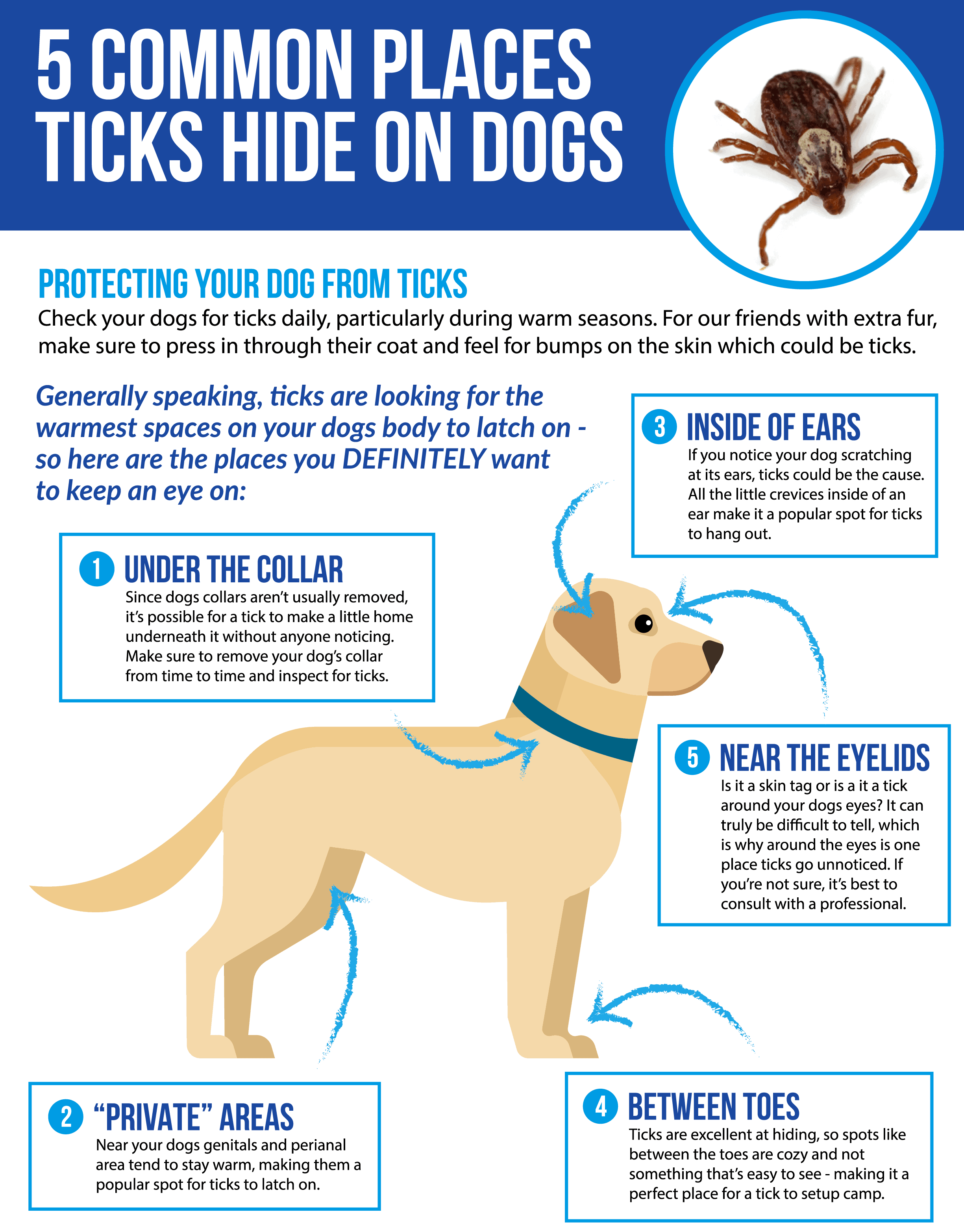7 shocking facts about Tick Bites on Dogs (Cause, Treatment + Prevention)
Tick Bites On Dogs – Treatment Prevention and Causes
When you find a tick bites on your dogs, you may feel disgusted and worried. Maybe the thought turns your stomach. Or maybe you’re concerned about the risks ticks pose to both your pet and your family. One thing is certain, however: ticks are undeniably a feared enemy.
What is a tick bite
Besides the obvious “icky” factor, a tick bite can transmit disease, cause anemia or infection, and even cause a rare but serious condition in dogs called “tick paralysis.” As a dog owner, know the basics of tick removal and prevention and educate yourself about the disease risks. With the right knowledge and information, you can both protect your dog from the danger of ticks and know how to handle a bite if your dog gets one.
Tick bites on dogs symptoms
Most tick bites can be detected by simply running your hand through your dog’s fur and noticing lumps or bumps on the surface. Ticks often attach themselves in crevices or areas with little to no hair. Pay special attention to the soft, warm area around the face, ears and neck, and also check the limbs, especially around the armpit and groin area.

In light-colored dogs, it may be easy to spot a brown or black bump protruding from the skin. This may be a festive tick. However, darker colored dogs may require further examination for attached ticks or crusts or wounds left by the offender. However, if a tick has been recently attached, it may not be very large. Even in light-colored dogs, small ticks are sometimes difficult to find.
Not all ticks carry disease, and just because a tick was found on your dog doesn’t necessarily mean he is infected with something. However, tick-borne diseases can be life-threatening, so the risk of a bite should be taken seriously.
However, for most tick-borne diseases, a tick must feed for several hours to transmit the infection to a host. The sooner a tick is located and carefully removed, the lower the risk of disease transmission.
The most common symptoms of many tick-borne diseases in the U.S. – such as Lyme disease, Rocky Mountain spotted fever and tick-borne paralysis – first appear with fever and lethargy.

Some diseases may also cause weakness, lameness, joint swelling or anemia. In tick paralysis, there may be a gradual onset of an awkward gait that develops into paralysis. These signs usually subside soon after the ticks are removed.
If you notice signs of illness associated with a tick bite on your dog, contact your veterinarian as soon as possible so that proper examination and necessary treatment can begin. Also note that it can take days, weeks or even months for symptoms of certain tick-borne diseases to appear.
Causes of tick bites on dogs
Ticks are parasitic arthropods that feed on the blood of their hosts. Attracted to warmth and movement, they seek out mammals – including humans, dogs and cats – to attach to and bite. Most tick species go through four life stages: eggs, larvae, nymphs and adults. And to mature, a tick must feed on blood during all of its growth stages.
Depending on the species, a tick’s lifespan can range from several months to years.
The most common tick species in the U.S. typically live in tall grass, wooded areas or shrubs, waiting for potential hosts (this is also called “questing“).
When a host passes by, the tick climbs aboard and attaches its mouthparts to the skin, beginning its blood meal. The tick may continue to feed for several hours to days and does not detach until the meal is complete.
Treatment and how to remove tick from your dog
To remove a tick from your dog, first find a clean pair of tweezers with a fine tip. Next, pull the hair out of the surrounding bite area and place the tweezers as close to the dog’s skin as possible, gently pinching the tick. Using gentle pressure, pull straight out (no twisting) until you feel the tick release its grip and you can pull it away from the skin.
Try not to grip the tick too tightly so you puncture its body and possibly release blood and pathogens. And never try to burn it away with a lighted match, as this can cause the tick to release more saliva (and toxins) into your pet.
Once the tick is removed, place it in a sealed plastic bag or jar of alcohol and call your veterinarian for inspection and identification. Finally, clean the wound with alcohol and apply a small amount of topical antibiotic to the wound.
Simple Best way to dislodge a tick

The best way to dislodge a tick on a dog is to rip it off as quickly as possible, Dr. de Jong and Dr. Kimsey agree. Here’s how:
- Use a tweezers with a very fine tip. “They also sell commercial tick removers, but they all basically do the same thing,” Dr. de Jong says.
- Hold the tick very close to the pet’s skin – as close as possible.
- Gently pull it straight out to get the tick free.
Finding and removing ticks quickly is important because it affects the likelihood of disease transmission. “The tick must actually bite the dog and remain attached for at least 24 hours, but usually 48 hours, before the proteins that cause Lyme disease are transferred from the tick into the dog’s bloodstream,” Dr. de Jong says.
For this reason, he does not recommend using other methods such as covering the tick with alcohol or petroleum jelly to prevent the tick from dislodging itself.

Indications that your dog is suffering from Lyme disease.
Lyme disease is a serious bacterial infection that can cause severe symptoms in dogs. Not all infected dogs continue to have problems, but those that do can become very unwell. The bacteria that causes Lyme disease is carried by ticks found in the UK and can be transmitted to both dogs and humans if they are bitten by an infected tick.
The number of cases of Lyme disease in humans in the UK has increased in recent years, and both dogs and dog owners who walk in areas where ticks are present are at risk of the disease.
When dogs show symptoms with Lyme disease, they may include the following:
- Lethargy
- Loss of appetite
- Fever
- Lameness
- Swollen lymph nodes
Always talk to your veterinarian if your dog shows any of these signs or other unusual symptoms. Your dog may not show any signs for weeks or even months after being bitten. If your dog is not feeling well and you know he was bitten by a tick, even if it seems like a while ago, always mention this to your veterinarian. Your vet can run some tests to determine if your dog has the disease, and they can prescribe antibiotic treatment if needed.
How do ticks get on humans and dogs
The main carrier of Lyme disease is the black-legged tick (Ixodes scapularis), also called the “deer tick” or “bear tick.” The tick acquires the Lyme disease bacterium when it feeds on an infected animal such as a mouse, deer, or other mammal, and then transmits the bacterium to the next animal it feeds on.

Ticks do not jump or fly. They can only crawl. They enter their host by waiting at the tips of vegetation. For example, when a dog or person brushes against a bush, the tick quickly grabs and then crawls to find a place to bite.
Can a person catch Lyme disease from their dogs
Dogs are not a direct source of infection for humans. Lyme disease can only be transmitted from one pet to another or from a pet to a human through tick bites. However, a carrier tick could come into your home on your dog’s fur and get on you.
If your dog is diagnosed with Lyme disease, you and other pets were likely in the same outdoor environment and may also be at risk. Therefore, it is recommended that you consult your doctor and veterinarian to determine if you should test other pets, or family members.
Other tick-borne dog diseases
Ticks can also transmit some other less common but serious bacterial diseases in dogs, including anaplasmosis and babesiosis.
Anaplasmosis can include symptoms similar to Lyme disease. Babesiosis can present with a variety of symptoms, from sudden and severe shock, high fever and dark urine to a slowly progressive infection with more subtle clinical signs. Diagnosis of both diseases involves blood tests similar to those used to screen for Lyme disease.
Sometimes dogs and humans get sick of the same disease by “co-infection” of multiple tick-borne diseases, in which more than one type of disease-causing bacteria is transmitted by a tick bite. This situation can make diagnosis and treatment even more difficult and challenging.









.jpeg&w=360&h=205&q=60&zc=2&cc=000000)













.jpeg&w=360&h=205&q=60&zc=2&cc=000000)
